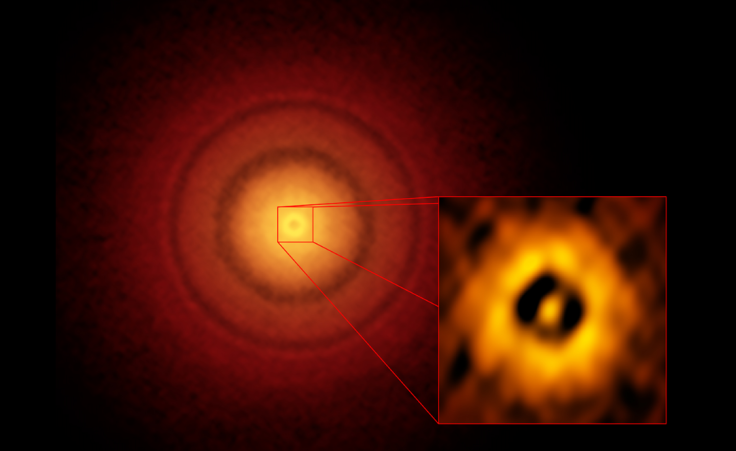Infant Earth Spotted Around A Young Sun-Like Star

A team of scientists using the Atacama Large Millimeter/submillimeter Array (ALMA) in Chile have spotted an infant version of the Earth orbiting a nearby Sun-like star. The new images show the protoplanetary disk, formed as a result of accretion of dust and debris left over from the star’s birth, in unprecedented detail and may help scientists answer a fundamental question about our own solar system — how exactly do planets form?
“This is the highest spatial resolution image ever of a protoplanetary disk from ALMA, and that won't be easily beat going forward,” Sean Andrews from the Harvard-Smithsonian Center for Astrophysics, and lead author of a paper published in the Astrophysical Journal Letters, said in a statement.
The young star around which this baby Earth — which could turn out to be a bigger super-Earth — is forming, is approximately 176 light-years away and goes by the name TW Hydrae. By a stroke of luck, its protoplanetary disk faces Earth, giving scientists an unimpeded and undistorted view.
“Previous studies with optical and radio telescopes confirm that this star hosts a prominent disk with features that strongly suggest planets are beginning to coalesce,” Andrews said in the statement. “The new ALMA images show the disk in unprecedented detail, revealing a series of concentric dusty bright rings and dark gaps, intriguing features that suggest a planet with an Earth-like orbit is forming there.”
Additionally, the photograph also shows gaps located at distances of 1.9 billion and 3.7 billion miles from the star, possibly indicating other regions in the system where planets are forming.
This is not the first time a baby planet has been captured in its formative years. In November, a team of scientists captured a photo of a planet being born around a young star named LkCa15, located 450 light-years from Earth.
However, what makes this discovery more exciting is the fact that scientists believe that TW Hydrae closely resembles our own Solar System when it was merely 10 million years old. By studying the protoplanetary disk around TW Hydrae, scientists hope to better understand the evolution of our own planet.
© Copyright IBTimes 2024. All rights reserved.





















